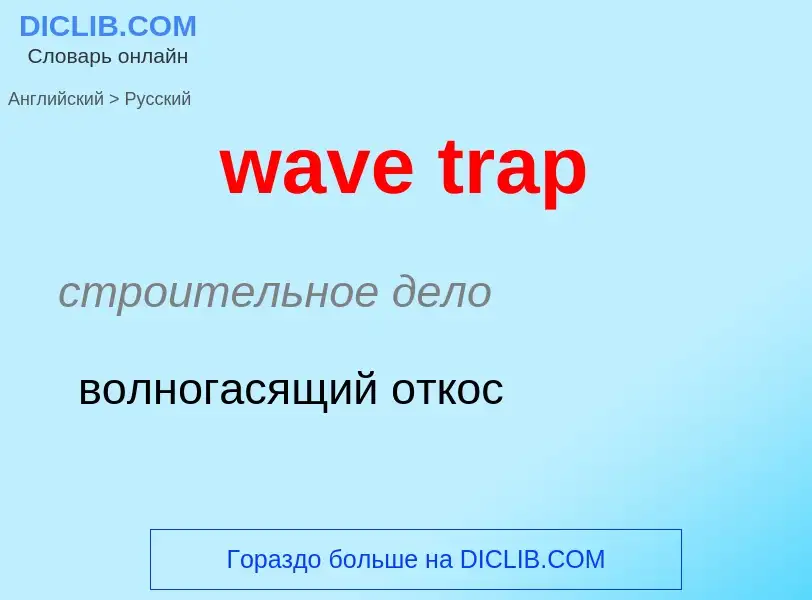Перевод и анализ слов искусственным интеллектом ChatGPT
На этой странице Вы можете получить подробный анализ слова или словосочетания, произведенный с помощью лучшей на сегодняшний день технологии искусственного интеллекта:
- как употребляется слово
- частота употребления
- используется оно чаще в устной или письменной речи
- варианты перевода слова
- примеры употребления (несколько фраз с переводом)
- этимология
wave trap - перевод на русский
строительное дело
волногасящий откос
нефтегазовая промышленность
ловушка для углеводородов
общая лексика
залежь тектонически экранированая
нефтегазовая промышленность
структурная ловушка (залежь нефти, приуроченная к тектоническим структурам)
энергетика
залежь литологически экранированная
нефтегазовая промышленность
стратиграфическая ловушка (нефти, газа)
['træplain]
охота
система капканов
линия капканов
существительное
охота
система капканов
общая лексика
заградитель линейный
Определение
Википедия
In signal processing, a band-stop filter or band-rejection filter is a filter that passes most frequencies unaltered, but attenuates those in a specific range to very low levels. It is the opposite of a band-pass filter. A notch filter is a band-stop filter with a narrow stopband (high Q factor).
Narrow notch filters (optical) are used in Raman spectroscopy, live sound reproduction (public address systems, or PA systems) and in instrument amplifiers (especially amplifiers or preamplifiers for acoustic instruments such as acoustic guitar, mandolin, bass instrument amplifier, etc.) to reduce or prevent audio feedback, while having little noticeable effect on the rest of the frequency spectrum (electronic or software filters). Other names include "band limit filter", "T-notch filter", "band-elimination filter", and "band-reject filter".
Typically, the width of the stopband is 1 to 2 decades (that is, the highest frequency attenuated is 10 to 100 times the lowest frequency attenuated). However, in the audio band, a notch filter has high and low frequencies that may be only semitones apart.

![tilted blocks]] tilted blocks]]](https://commons.wikimedia.org/wiki/Special:FilePath/StratigraphicTrap5.png?width=200)
![[[Long-billed hermit]] (''Phaethornis longirostris baroni''), a species of traplining hummingbird adapted for flying long distances [[Long-billed hermit]] (''Phaethornis longirostris baroni''), a species of traplining hummingbird adapted for flying long distances](https://commons.wikimedia.org/wiki/Special:FilePath/Phaethornis longirostris baroni.jpg?width=200)
![[[Rufous hummingbird]] (''Selasphorus rufus''), a species of territorial hummingbird, is more robust than traplining species [[Rufous hummingbird]] (''Selasphorus rufus''), a species of territorial hummingbird, is more robust than traplining species](https://commons.wikimedia.org/wiki/Special:FilePath/Selasphorus rufus1.jpg?width=200)

